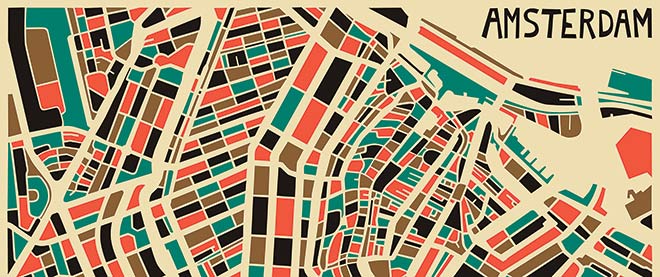Cartography in the digital age
In the era of GPS, the old-fashioned art of map making asks some bigger questions
Jazzberry Blue
Share

Anthony Robinson grew up navigating the family vacation via a fold-up map in the back seat of the car. His daughter, not quite two, has been born into a different world. “She’ll never have a concept of having to go and ask someone for directions,” says Robinson, who is a geographer. GPS tracking, satellite navigators and digital maps that fit in your pocket have freed us from needing to ask, “How do I get there?” And yet map production, and consumption, is booming. Stripped of its navigational use, the modern map is answering, in much more personal, complex and interesting ways, the question, “Where am I?”
There is a democratization of cartography, what Robinson has dubbed a “geospatial revolution.” Last month, Robinson, a professor at Pennsylvania State University, wrapped up what’s being called the world’s first digital-mapping open online course—with 48,000 registered students (36,000 of whom participated in some way). He taught students around the world to harness new software and combine it with data to make their own thematic maps, the kind that used to appear only in history or geography textbooks. “Now, if you read Wired or Gizmodo, you’re probably going to encounter, every few days, a map of slang, or where the football fans are for a certain team—you name it,” Robinson notes. Everything happens somewhere, he says: disease outbreaks, poverty, Bigfoot sightings. Thus, everything can be mapped.
Map-making was once the domain of experts, says entrepreneur Javier de la Torre. Now “almost everyone can do maps.” His company CartoDB offers free online mapping software used by National Geographic, the Wall Street Journal, as well as banks, government agencies, and even NASA. CartoDB has 20,000 users, with about 200,000 maps published in just a year and a half. Among its biggest hits is a map showing the locations for every meteorite discovery, which got four million views in less than two days. Such digital maps are interactive, intuitive and collaborative and, to de la Torre, more interesting.
And yet, the lowly paper map is also seeing a renaissance. Artists drawn to the ancient craft are making hand-drawn maps or designing hip renderings of their cities. They include two Toronto-based artists: Jazzberry Blue’s graphic, bright prints are a play on the colour repetition of traditional maps, while Dave Murray’s typographical maps plot a neighbourhood in bold fonts—a different kind of navigation for what you might do or see.
In an even more whimsical approach, Japanese artist Nobutaka Aozaki is compiling small hand-drawn maps collected from unsuspecting New Yorkers whom he stopped for directions, to build a larger collage of that city. And the maps in Mapping Manhattan—a book of illustrated maps by an assortment of 75 New Yorkers, released this year—read like stories, vignettes of one person’s life in the city, such as one that plots the placement of lost gloves. They underline the obvious: Map-makers are human, and place is subjective. “It’s helping you find your way, not necessarily in a geographical sense, but in a personal or temporal sense,” says author Becky Cooper. One man drew a map of his 50-year relationship, not long after his wife died, a history of his love.
For Hans D. Kok, a former pilot and collector of maps of the Dutch East Indies and president of the International Map Collectors’ Society, maps have always had value as “condensed history.” “You see the countries they didn’t know about, the islands that pop up and disappear,” he says. The first map of the U.S. sold for $1.8 million in 2010—which points to a shortcoming in the high-tech version. Constantly updated, it cannot match that physical record of knowledge at a given time. “If you think about how digital mapping works, we don’t even know what we just lost,” Robinson says.
That could change. Maps could grow and adapt without losing old data. With the ability to make complex maps will come the ability to better understand the information behind them. “The romance around mapping hasn’t been lost,” Robinson says. That mass of information swirling within a borderless web? We want a place on the map to put it.